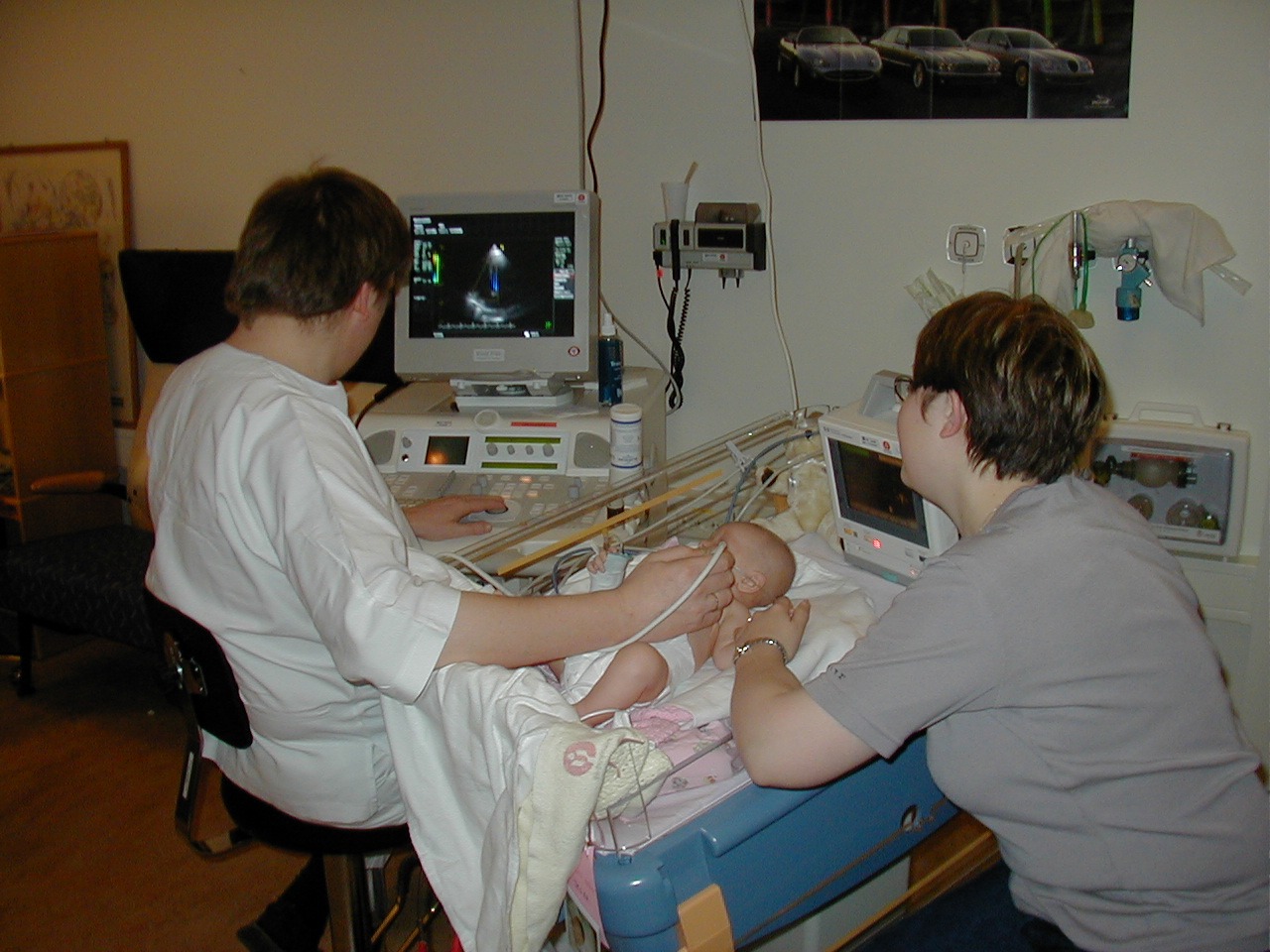ULTRASOUND |

Ultrasound is a medical imaging technique which enables doctors to both visualise the internal structures of the body and can also be used for therapy.
Ultrasound does not involve X-rays. The technique involves using transducers with piezoelectric crystals which produce high-frequency soundwaves which, when applied to the body, send focussed pulses of sound waves to the internal tissues and organs These waves are reflected back to the transducer and the received data converted into images for diagnostic purposes. The investigation is done in real time.
Ultrasound imaging is used in the abdomen to visualise the abdominal structures such as the kidneys , liver and spleen. It is very useful in the assessment of the uterus and especially a developing foetus in obstetric practice. It can also visualise superficial structures such as the thyroid gland , muscles and tendons and the breast. Ultrasound does not pass through air and hence cannot be used to visualise the lungs easily. It does not pass through bone easily either and therefore intracranial structures in adults are difficult to visualise using this technique. Vascular structures such as arteries and veins are well demonstrated.
Ultrasound can be used to guide medical procedures such as biopsies of tissues.
In the heart, ultrasound can demonstrate the cardiac structures and this application is known as echocardiography.
Not all ultrasound examinations are performed by doctors. In the UK radiographers and technicians who perform ultrasound are known as sonographers. In other parts of the world they are known as radiology technicians.
Pioneers include John Wild who first used ultrasound in 1949 for measuring bowel wall thickness in the USA, Edler the Swedish cardiologist who used it in 1953 in Lund and Holmes et al in USA in 1962.
Ian Donald a Scottish obstetrician working in Glasgow was a pioneer of the applications of this technique. With the physicist Tom Brown, Donald created one of the early machines to perform ultrasound resulting in a very important paper in the Lancet in 1958 ‘Investigation of abdominal masses by pulsed ultrasound’.
AB
REFERENCES |
|---|
|
W A History of Medical Ultrasound, Francis Duck, 2021 W Articles from Medical Physics International: www.mpijournal.org/pdf/2021-SI-05/MPI-2021-SI-05.pdf www.mpijournal.org/pdf/2021-SI-06/MPI-2021-SI-06.pdf W The British Medical Ultrasound Society have a page on history, and their historical collection: https://www.bmus.org/for-patients/history-of-ultrasound/ W A history of ultrasound in gynaecology and obstetrics, which includes a great deal of detail on the older developments: https://www.ob-ultrasound.net/history1.html B Thomas AMK Banerjee A K Busch U, Classic papers in modern diagnostic radiology, Springer Verlag, Berlin, NY. 2005 ISBN 3540219277 B Thomas A M K Banerjee AK The History of Radiology, OUP, May 2013 J Donald I Mac Vicar J Brown T.G 1958 Investigation of abdominal masses by pulsed ultrasound Lancet 271 1188-95
|
| IMAGE |
| Sonographer_doing_pediatric_echocardiography -- Wikipedia |

